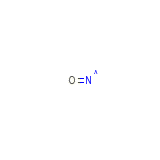nitrogen protoxide




nitrogen protoxide Brand names, nitrogen protoxide Analogs
nitrogen protoxide Brand Names Mixture
- Aldoril 15 Tab (Hydrochlorothiazide + Methyldopa)
- Aldoril 25 Tab (Hydrochlorothiazide + Methyldopa)
- Apo Methazide 15 (Hydrochlorothiazide + Methyldopa)
- Apo Methazide 25 (Hydrochlorothiazide + Methyldopa)
- Novo-Doparil 15 Tab (Hydrochlorothiazide + Methyldopa)
- Novo-Doparil 25 Tab (Hydrochlorothiazide + Methyldopa)
- Pms-Dopazide 15 Tab (Hydrochlorothiazide + Methyldopa)
- Pms-Dopazide-25 Tab (Hydrochlorothiazide + Methyldopa)
- Supres 150 Tab (Chlorothiazide + Methyldopa)
- Supres 250 Tab (Chlorothiazide + Methyldopa)
nitrogen protoxide Chemical_Formula
NO
nitrogen protoxide RX_link
http://www.rxlist.com/cgi/generic/inomax.htm
nitrogen protoxide fda sheet
nitrogen protoxide msds (material safety sheet)
nitrogen protoxide Synthesis Reference
No information avaliable
nitrogen protoxide Molecular Weight
30.0061 g/mol
nitrogen protoxide Melting Point
-163.6 oC
nitrogen protoxide H2O Solubility
9.49E+004 mg/L
nitrogen protoxide State
Liquid
nitrogen protoxide LogP
0.10
nitrogen protoxide Dosage Forms
Cream; Drops; Gas; Liquid; Lotion; Ointment; Powder; Tablet
nitrogen protoxide Indication
For the treatment of term and near-term (>34 weeks) neonates with hypoxic respiratory failure
nitrogen protoxide Pharmacology
Persistent pulmonary hypertension of the newborn (PPHN) occurs as a primary developmental defect or as a condition secondary to other diseases such as meconium aspiration syndrome (MAS), pneumonia, sepsis, hyaline membrane disease, congenital diaphragmatic hernia (CDH), and pulmonary hypoplasia. In these states, pulmonary vascular resistance (PVR) is high, which results in hypoxemia secondary to right-to-left shunting of blood through the patent ductus arteriosus and foramen ovale. In neonates with PPHN, Nitric oxide improves oxygenation (as indicated by significant increases in PaO2). Nitric oxide appears to increase the partial pressure of arterial oxygen (PaO2) by dilating pulmonary vessels in better entilated areas of the lung, redistributing pulmonary blood flow away from lung regions with low ventilation/perfusion (V/Q) ratios toward regions with normal ratios.
nitrogen protoxide Absorption
Nitric oxide is absorbed systemically after inhalation.
nitrogen protoxide side effects and Toxicity
No information avaliable
nitrogen protoxide Patient Information
No information avaliable
nitrogen protoxide Organisms Affected
Humans and other mammals














